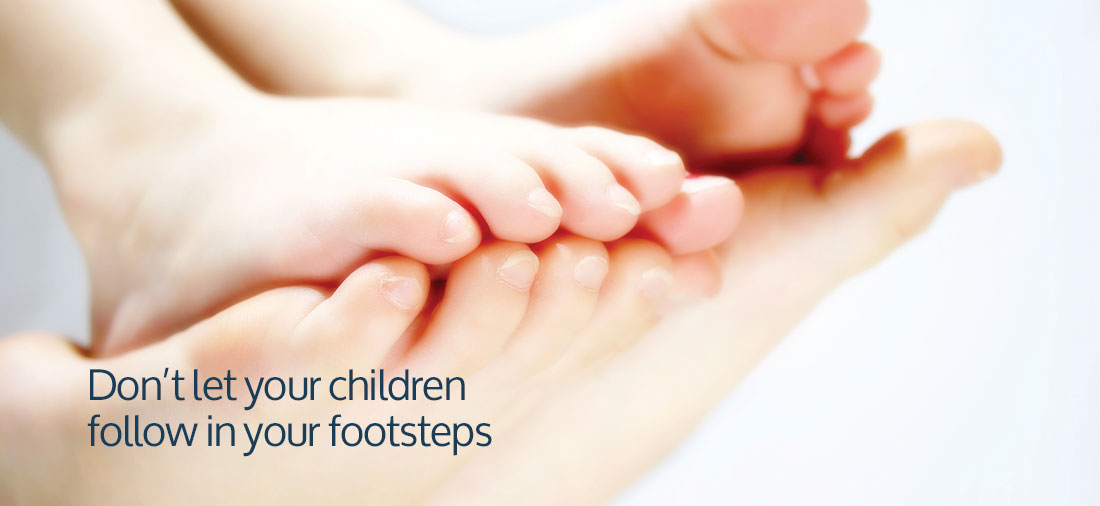Diabetes and Podiatry
8-14 July 2018 is National Diabetes Week. Have you heard that many people with diabetes end up in hospital because of foot problems? In fact, it is the leading complication of diabetes and the most common cause of hospitalisation for people with diabetes in Australia. Of course, not all foot problems will require a hospital stay as they can vary from minor foot complaints to wounds that don’t heal. Serious complications can often be avoided by careful self-management and through regular checkups.
Unfortunately, loss of sensation in the feet means that many simple injuries to the foot, such as cuts, corns and calluses, can go unnoticed. If untreated, these injuries may not heal due to lack of blood supply and infection. Severe infection can be a medical emergency and sometimes requires amputation of the infected part of the foot.
Below are some tips on self-managing your foot care if you have diabetes:
1. People with high blood glucose levels are at increased risk of infection, meaning even small cuts or abrasions can result in a severe infection. Getting your levels under control and keeping them as near to normal as possible can prevent further damage to your feet.
2. Good foot hygiene is very important. Wash your feet daily with a mild soap and warm water. Dry your feet carefully (especially between your toes!) and check for any cracks in your skin or bleeding.
3. Keep nails trimmed! Cut straight across using nail clippers and avoid cutting down into the side of the nail. Use a nail file or disposable emery board to smooth sharp nail edges.
4. Prevent or treat dry skin conditions by applying moisturiser daily. Put moisturiser everywhere on your feet, except between your toes – there’s enough moisture there already!
5. Wear comfortable socks without tight elastised cuffs or bulky seams, and supportive, closed-toe shoes that fit well. If you have lost feeling in your feet, your shoes could cause problems. Always check inside your shoes for things that could cause an injury, such as stones or even sharp edges within the shoe lining. Avoid walking barefoot or wearing unsupportive shoes. A foot orthotic from a podiatrist can help to provide extra support.
6. Keep the circulation flowing to your feet by staying active. Some physical activity every day will help to keep the blood circulating around your body. If you have a foot wound though, speak to your podiatrist about what types of exercise you can do that won’t cause further harm to your wound. Quitting smoking will help, as smoking is known to reduce blood flow to extremities.
7. If you have lost feeling in your feet, you are at risk at both hot and cold temperature extremes. Always wear shoes in hot weather to avoid walking on hot surfaces. Avoid electric blankets, hot water bottles and getting too close to the heater, although this is rarely a problem in North Queensland!
8. Look at your feet every day. If something looks like it should hurt, but it doesn’t, see your podiatrist or GP. If you have lost feeling in your feet, you may not notice a problem. A lot of serious foot problems, such as infected and severe foot wounds, could have been avoided if they had been identified and treated early.
Hopefully, you now understand why you need to look after your feet when you have diabetes. A diabetes foot assessment by one of our Podiatrists is recommended to establish your foot health status. We will undertake simple testing to assess the sensation in your feet, determine the blood supply to your feet and identify any potential risk areas. Based on these results, we can then determine whether you need to return annually, or if you need to be seen more frequently. Contact us for a check up today.








